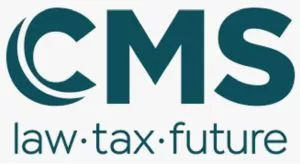- with readers working within the Oil & Gas industries
- within Wealth Management, Media, Telecoms, IT and Entertainment topic(s)
Background
On 19 July 2024, the European Commission (EC) published final regulatory technical standards (the Final RTS) under the amended ELTIF Regulation (so called “ELTIF 2.0”). This publication marks the end of back and forth with the European Securities and Markets Authority (ESMA), whereby the EC submitted in March a communication suggesting certain amendments to the attention of ESMA, who responded at the end of April with a revised version of the RTS.
This publication aims at highlighting the most striking points of the Final RTS and their main implications. For full text, please click here.
Key features
Minimum holding period
The Final RTS do not contain any strict requirement for having a minimum holding period, leaving this decision to the discretion of the ELTIF manager who is free to choose to determine a minimum holding period based on several criteria laid down in Article 3(1), including inter alia, the long-term nature and investment strategy of the ELTIF, the underlying asset classes of the ELTIF, their liquidity profile and their position in their life-cycle, the liquidity profile of the ELTIF, and the duration and characteristics of the life-cycle of the ELTIF and the ELTIF's redemption policy.
At the request of the competent authority, the ELTIF manager shall justify the appropriateness of the duration of the chosen minimum holding period and compatibility with the valuation procedures and redemption policy of the ELTIF.
Minimum notice period and redemption frequency
Where redemptions take place more frequently than on a quarterly basis, the ELTIF manager shall justify to the competent authority of the appropriateness of the redemption frequency and its compatibility with the individual features of the ELTIF.
Pursuant to Article 18(2)(d) of the ELTIF Regulation, the redemption policy of the ELTIF must ensure that redemptions are limited to a percentage of the assets of the ELTIF. Unlike the precedent versions of the RTS, the Final RTS leave it to the discretion of the ELTIF manager to calibrate that percentage based on either of the following options:
a) The redemption frequency and the notice period of the ELTIF, including the extension of the notice, if any, depending on which of the three options referred to in Annex I of the Final RTS is selected by the ELTIF manager; or
b) The redemption frequency and the minimum percentage of liquid assets, as specified in Annex II of the Final RTS.
To determine the maximum size of redemption at a given redemption date, the ELTIF manager shall apply the above-mentioned percentage to the sum of (i) the UCITS eligible assets at that redemption date, and (ii) the expected cash flow, forecasted on a prudent basis over 12 months (only those with a high degree of certainty that they will materialize and not including the possibility for the ELTIF to raise capital through new subscriptions).
Where the notice period of the ELTIF, including any extension, is less than 3 months, the ELTIF manager shall inform the competent authority to explain the reason(s) for such shorter notice period and why it is consistent with the individual features of the ELTIF. An ELTIF which is solely marketed to professional investors may be exempted from this obligation.
Liquidity management tools
The Final RTS no longer strictly impose the ELTIF manager to adopt liquidity management tools (LMTs), but it may, at its discretion, select and implement at least one anti-dilution LMT among anti-dilution levies, swing pricing and redemption fees.
However, the ELTIF manager may also select and implement other LMTs and shall, in that case, be able to justify to the competent authority the reason(s) why another set of LMTs would be more appropriate than the above-mentioned LMTs considering the interests of the ELTIF and its investors. An ELTIF which is solely marketed to professional investors may be exempted from this obligation.
What's next?
Now that the EC has adopted revised RTS with the amendments it considered relevant, the European Parliament and the Council may object to it within a period of three months, after which the RTS will be published and enter into force on the day following publication.
While the Final RTS seem to have considered most of the funds industry's concerns on the first draft, only time will tell if the adoption of the RTS will generate the widely expected upsurge of semi open-ended ELTIFs.
The content of this article is intended to provide a general guide to the subject matter. Specialist advice should be sought about your specific circumstances.
[View Source]





